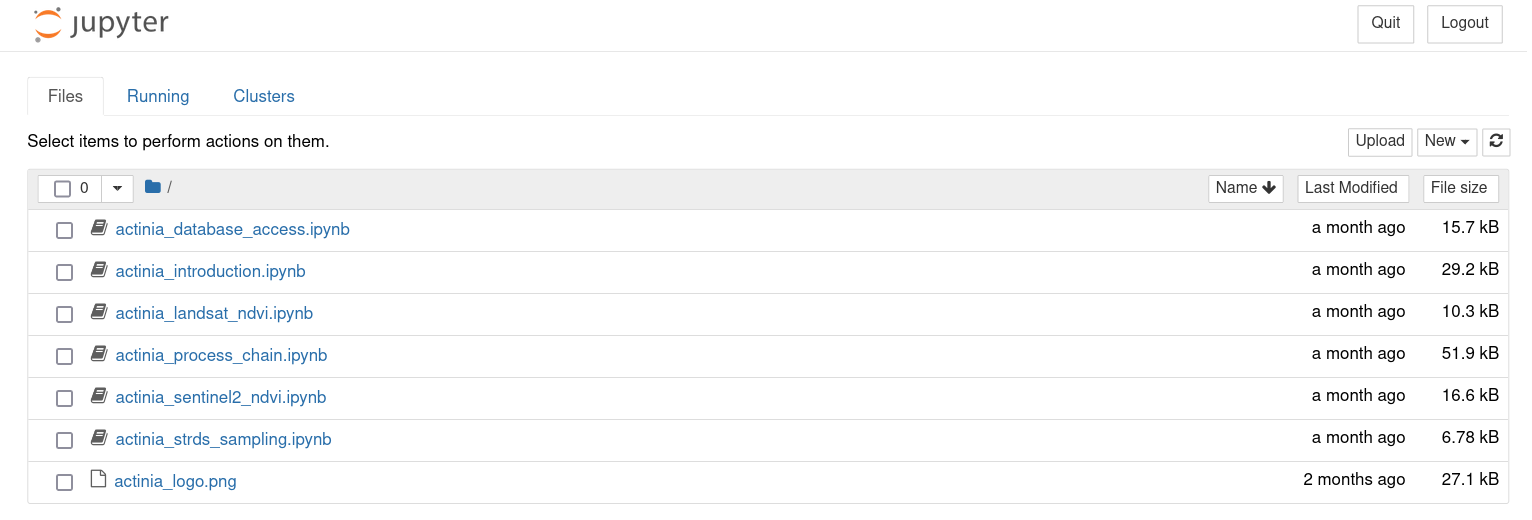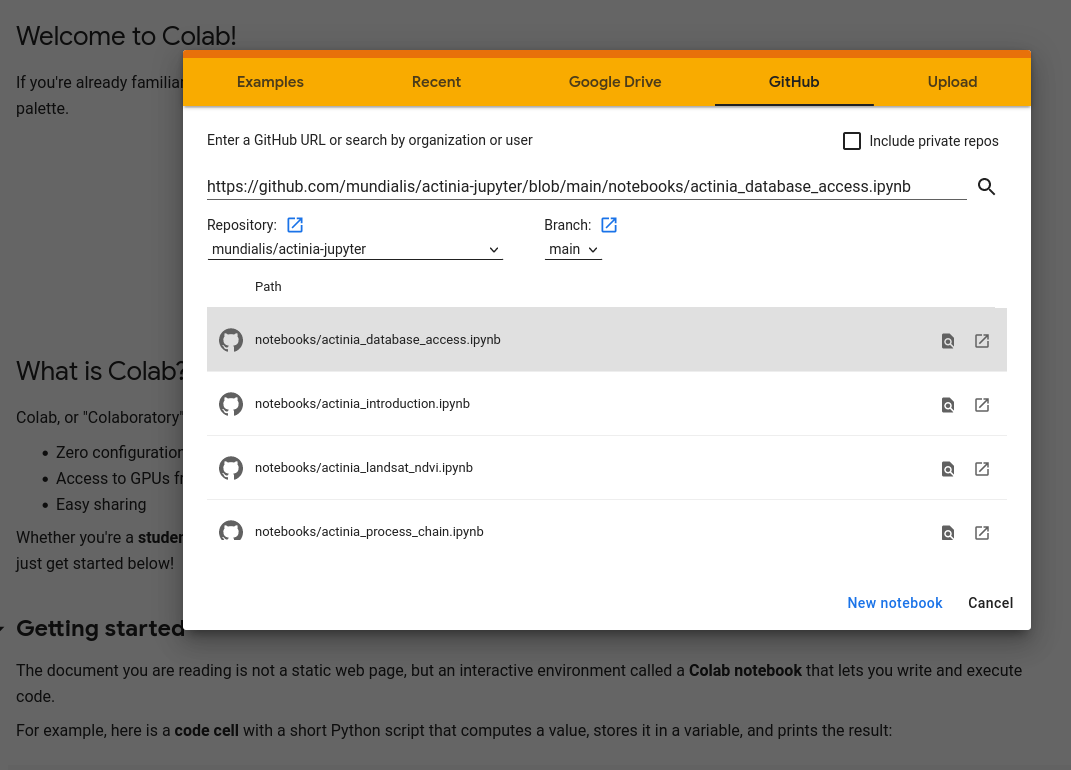actinia in jupyter notebooks

So far, examples used curl on the command line or a browser to interact with actinia. Another possibility is to create a Python script to interact with actinia. Jupyter notebooks are a convenient way to create Python scripts step-by-step.
The official actinia tutorials that also use curl commands have been converted to jupyter notebooks
Getting started with jupyter notebooks
There are generally two ways to work with jupyter notebooks * run a jupyter notebook on your local machine * use jupyter hub where you can upload jupyter notebooks
Running a jupyter notebook locally
Open a terminal in a folder with jupyter notebooks and start jupyter with
jupyter-notebook
This opens an instance in the default browser with a list of files:

Using some jupyterhub
An example for a jupyterhub is Google Colab where you can create, upload, and modify jupyter notebooks (a Google account is required).
In Google Colab, you can also load a jupyter notebook directly from some Github repo:

actinia jupyter notebooks
Ready to use jupyter notebooks for actinia based on the official tutorial are available on Github in the mundialis repo actinia-jupyter. You can download this repo with e.g.
git clone https://github.com/mundialis/actinia-jupyter.git
Here we will use the following notebooks
Ready to use Google Colab links:
Note that only a limited list of GRASS modules is allowed for the actinia demouser.